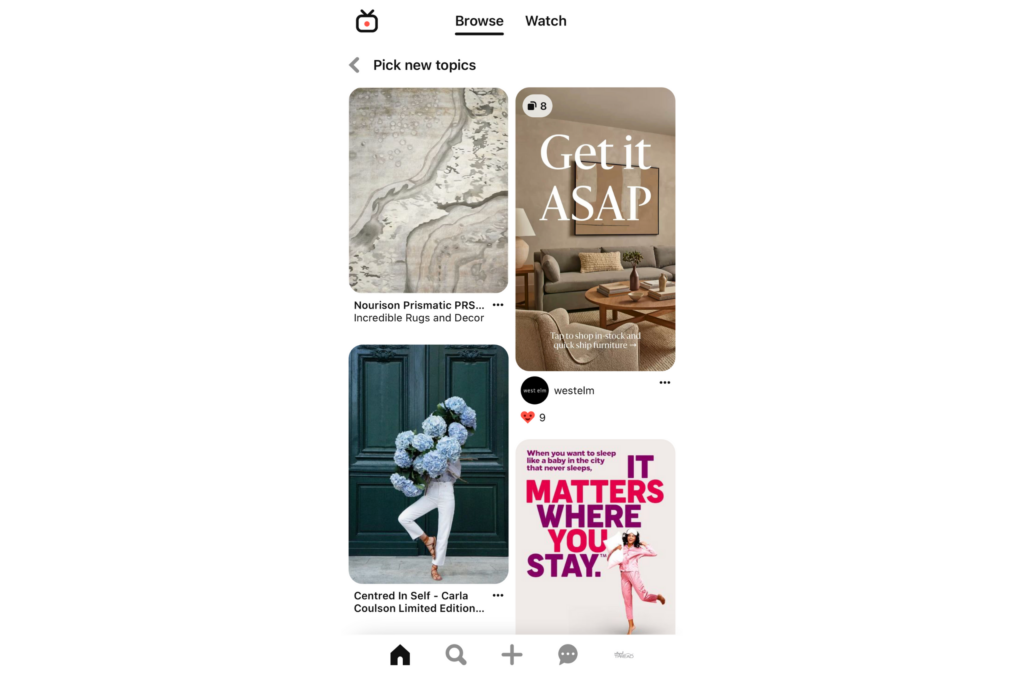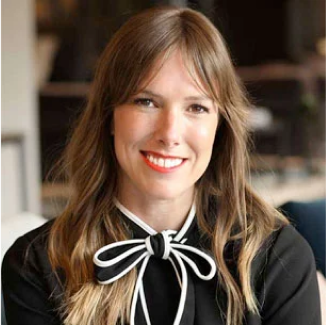Marketers in architecture, design, construction and real estate have been shouting from the rooftop: Pinterest is one of the most exciting digital marketing channels of 2022. And it’s unsurprising when you learn that 85% of pinners use Pinterest for project management.
We know that consumers actively use Pinterest, but the B2B benefits are significant when you consider the amount of interior designers, architects and builders who use Pinterest to engage their clients during the design phase.
Let’s dive into this platform with 5 Pinterest Strategies that will help take your presence to the next level.
Optimize Your Pinterest Keyword Strategy
What makes Pinterest unique as a social platform is that it is actually a search engine, relying on keywords that users search for to discover content they are interested in. How does this benefit you? The users on Pinterest have a higher purchase intent because they are proactively searching for your product/service. Therefore, you should take an SEO approach out the gate when you are working on both your organic and paid Pinterest strategies.
How to Research Pinterest Keywords
Pinterest has several tools to accomplish keyword research, but you’ll also want to consider your top performing SEO keywords in your Google Search Console. Because Pinterest doesn’t have as detailed keywords as Google offers in their search engine, use your GSC keyword research as a starting point for your Pinterest keyword research. With this multi-step approach, you have insights into the products/services that your audience is researching the most.
After you have an idea of your top performing keywords in Google Search Console, turn to Pinterest’s keyword research tools to uncover top performing keywords in Pinterest:
Create a list in Excel or Google Sheets of the most relevant keywords that have the most search volume. You’ll want to revisit this list periodically to keep it up to date. 97% of pinners use non-branded searches in Pinterest and many keyword trends fluctuate with seasons. For example, in the Fall months, “fall home decor” becomes a trending keyword.
Where to Insert Keywords in Pinterest
Now that you have your initial (remember, keyword research should be ongoing!) keyword research, you’ll need to insert those keywords across your content on Pinterest.
Pinterest Keyword Checklist:
- Pinterest profile description
- Pinterest profile name (NOTE: only do this if you are a B2B professional services provider such as a consultant)
- Board titles
- Board descriptions
- Pin titles
- Pin descriptions
- Pin alt text
- Destination link
Organize Your Boards for User Experience
Users on Pinterest use the platform differently than they do on other social media platforms. You want pinners to navigate your boards with ease and find the content they are looking for. Take your keyword research into consideration when reorganizing your boards so that they align with what users are searching for.
Here are some ideas to test out for better organization of your boards:
- Organize by aesthetic [ex: Mountain Modern, Modern Farmhouse, Timberframe]
- Organize by room [ex: Kitchen, Living Room, Outdoor Spaces]
- Organize by product [ex: kitchen hardware, kitchen lighting, outdoor furniture]
- Organize by services [ex: Commercial Lighting, Hospitality Lighting, Hotel Lobby Design]
- Organize by market [ex: City Homes, Beach Homes, New York Home Design]
By having a great user experience across your Pinterest profile, you can increase overall engagement on your pins.
Take Advantage of Pinterest Creative Formats
We LOVE the different formats for Pinterest ad creatives. It’s especially helpful for our clients in the design space that have products to sell as you can pin point (pun intended) specific products in a full shot of a space, like a living room, and link out to that product page. Below is a complete list of Pinterest ad creatives and best practices.
Standard Pin
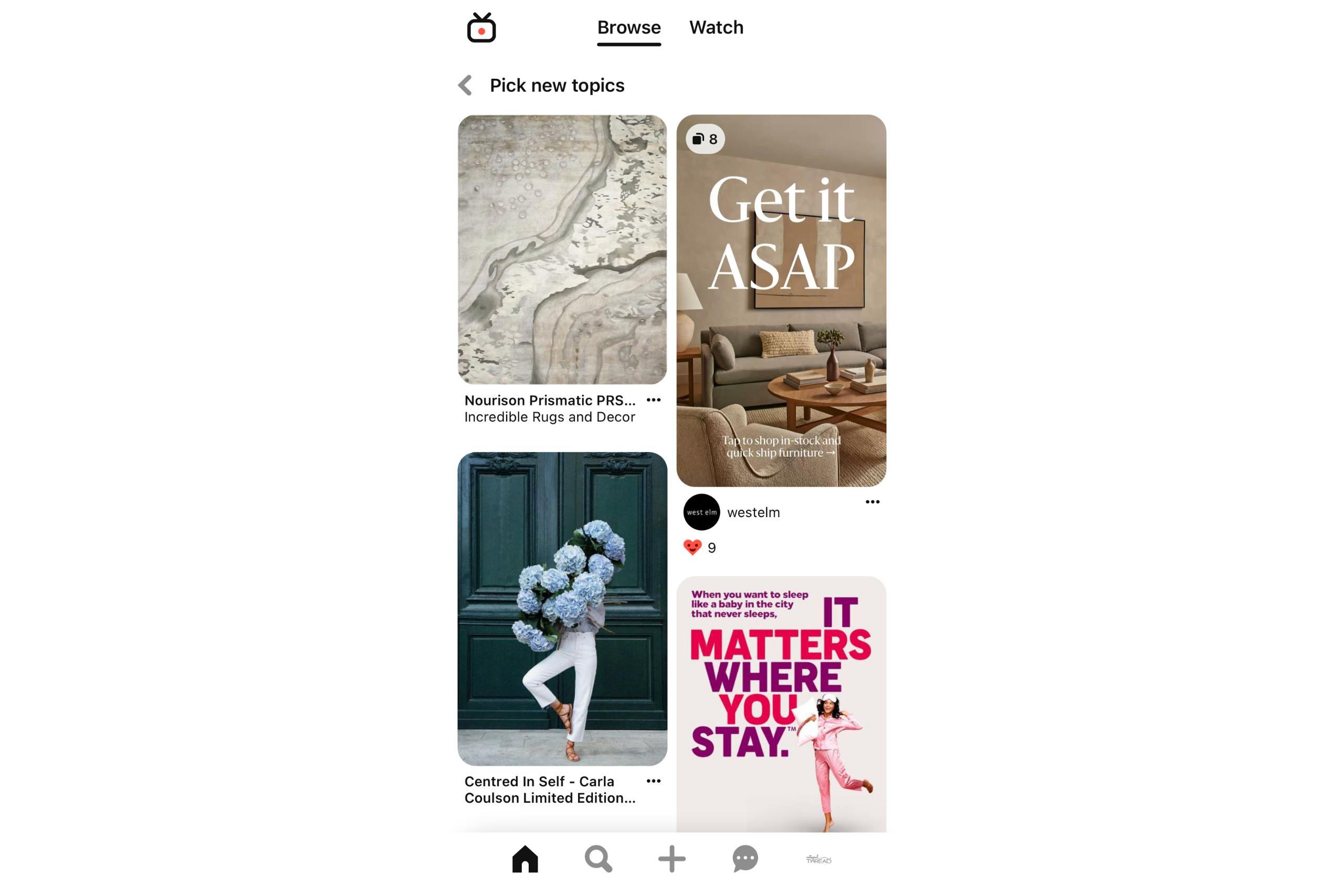
The standard pin is a basic single image format but it doesn’t have to be that basic! Make sure to include your logo in the image and play around with text overlays to make your messaging pop as a user scrolls through pins.
Video Pins
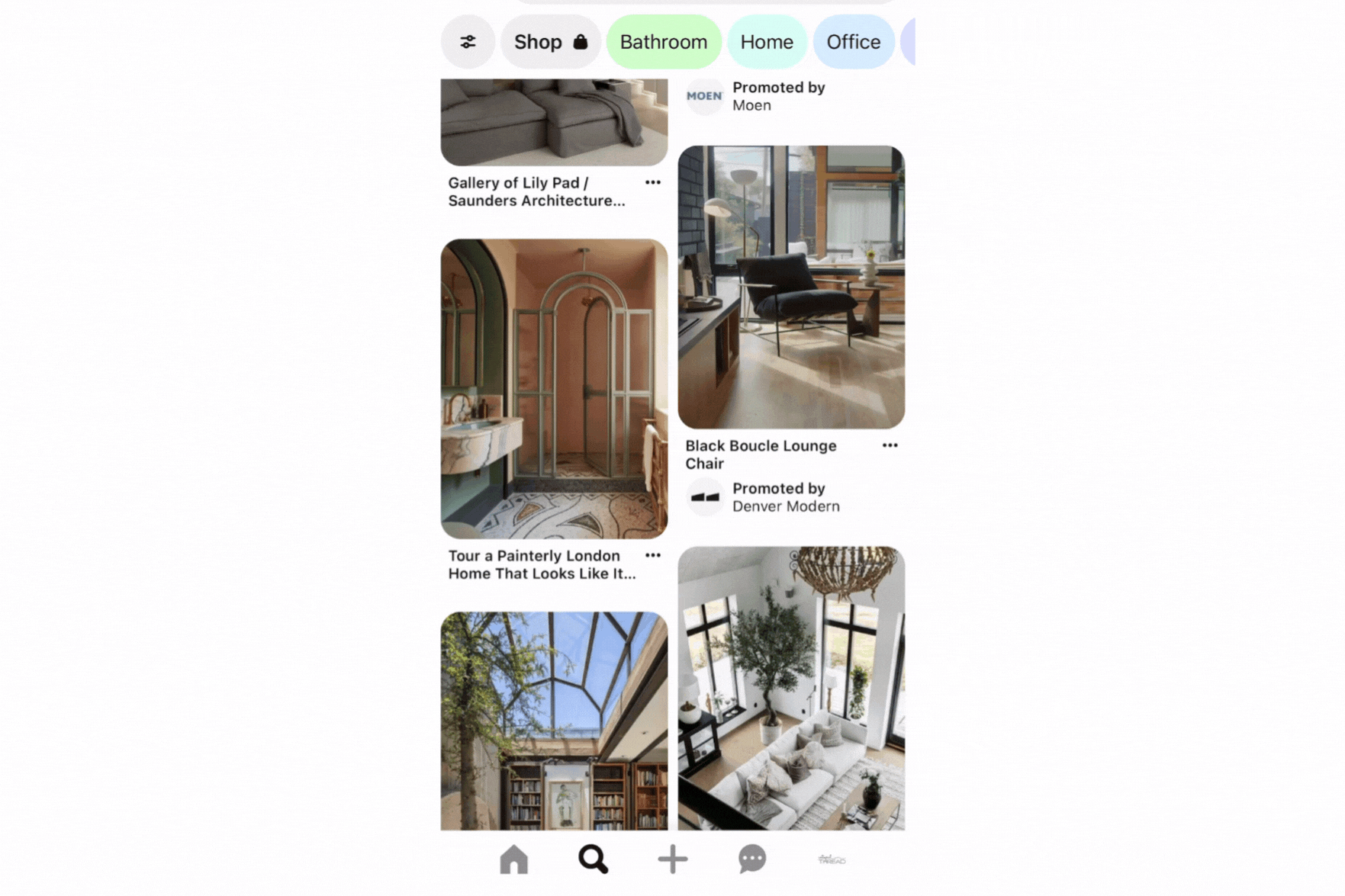
Video has the highest engagement rate of all media forms on the internet. According to marketing extraordinaire Neil Patel, viewers are 2.7x more likely to purchase something after they have seen a promoted video. Video pins also makes your pin stand out among a field of non-moving pins in a feed. We find that 6-15 second videos work best and be sure to pick a great cover image.
Idea Pins

Idea Pins are Pinterest’s response to Instagram Reels: short video segments or a series of up to 20 graphics designed to engage pinners with educational content. Additionally, they give brands more opportunity for increased engagement and conversions due to the special formatting:
- User tagging
- Interactive stickers & topic hashtags
- Text & graphic overlays
- Optional voiceovers
- Option to add detail pages, such as a list of steps or materials needed
- A Tik-tok-like creation process right from your phone
According to Hootsuite, this new format receives 9x more comments than your traditional pin format. Note: this format is only available organically, not through paid Pinterest ads.
Pinterest Collection Ads

Another opportunity to increase your pin engagement is to use Collection Pins. This format contains one featured video or image with 3 supporting images. Then, if a user taps on the ad, you can display up to 24 supporting images on the ad detail page.
These ads are great for product-based brands. Consider using a lifestyle project shot of a living room or kitchen and using the supporting images as a way to display specific products from that project.
Pinterest Carousel Ads
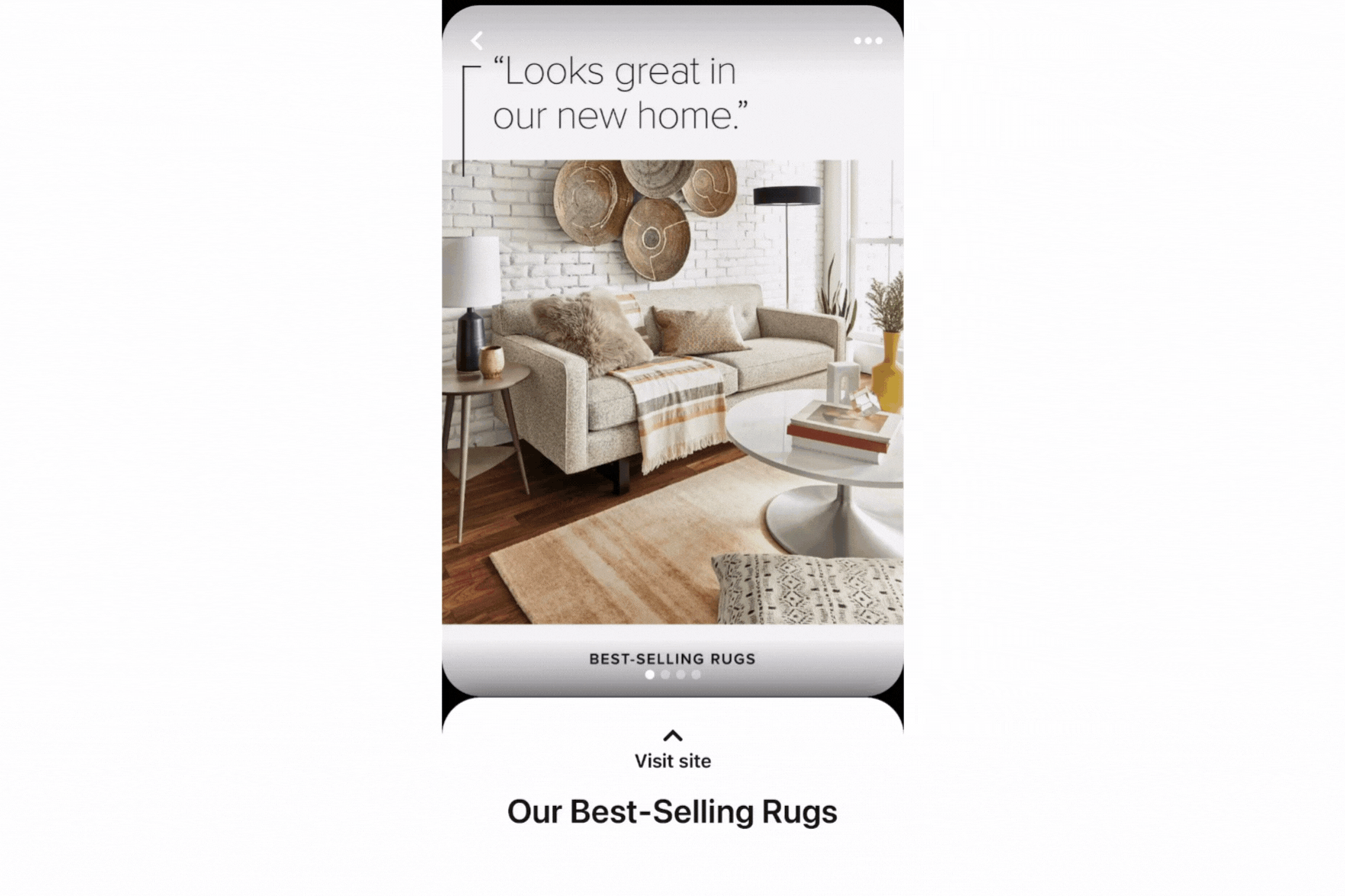
You’re most likely already familiar with a carousel creative ad spec so we’ll keep this one short: use carousel ads to show a larger part of your story including multiple projects or one project/product with a series of detailed shots to support.
Promoted Pins
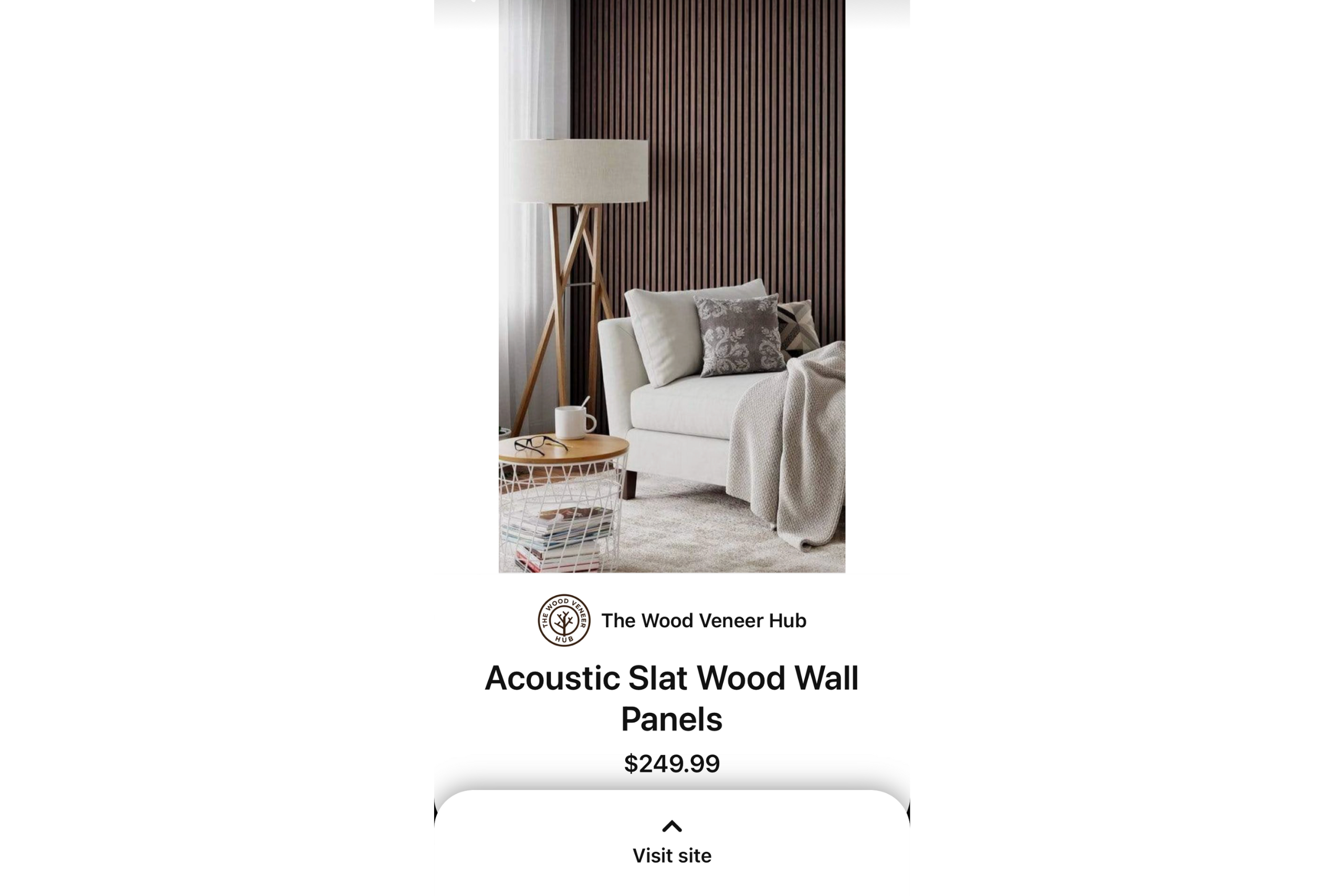
Similar to a boosted post, a promoted pin is putting an ad budget behind an existing pin to expand its reach. One major difference when running a promoted pin is you get to link the pin to a URL of your choice, increasing your ability to drive traffic to your website outside of Pinterest.
Shopping Ads

Pinterest can actually integrate with ecommerce or shopping platforms like Shopify, making it super easy to push out shopping ads in an automated way. While they only feature one video or one image, Pinterest uses data from your product information to automatically target users on Pinterest who might be interested. You can also set up your own targeting and data sets.
According to Pinterest, Floor & Decor saw a 300% boost in in-person sales over 9 months from their shopping ads strategy.
Get and Stay Creative With Content
Pinterest is image heavy, like Instagram, so it’s important to put your (imagery) best foot forward. But don’t let that hinder your creative juices from flowing.
Focus on Image Quality
Pinterest is a place where users expect high-quality images. Other social platforms, like Facebook, offer a little more leniency when it comes to user image expectations. Pinterest is less about personal story-telling and more about being a resourceful place where users can find inspiration. Because of this, it’s important to always use professionally shot images or video assets.
Don’t be Afraid to Share Blogs
You might not think of Pinterest as a great place to market your latest blog or whitepaper download, but it actually is! If you have blog content like 10 Tips for Luxury Fall Home Decor or 5 Mountain Modern Dream Homes, Pinterest is the perfect place to gain visibility and traffic!
Make sure to consider a great cover image or repurposing the blog content into an infographic/collage.
Test Different Varieties of Imagery
Consider the process of project management and the design phase. How can you create the best user experience for the audience who is gathering information for their next project? While you want to include full shots of spaces or projects, you should also include more detailed shots that help the pinner create their own board. For example, if you are a rug manufacturer or distributor, you’ll want to include images of a living room with the rug in it but you should also include the rug against a white background.
Keep in mind that digital marketing is an ongoing testing process, so keep an eye on the analytics to see which creatives are performing the best.
Navigating Your Pinterest Cadence
Utilizing keyword research and eye-catching imagery is essential when mapping out your Pinterest strategy, however, determining when and how often you pin on Pinterest is also key to your overall success. Having a consistent pinning cadence helps Pinterest gain trust of your account, allowing the algorithm to favor your pins and improve your reach.
It is recommended by Pinterest that you pin at least once a week, however, you will have to test out a few strategies to determine which pinning method works best for your audience. If your metrics are at their best when pinning every other day, once a week, or on Mondays and Wednesdays, move forward with that!
When to Hire a Pinterest Agency
Like any social media platform, Pinterest takes research, time, energy and a lot of planning to enhance your presence and stand out from the noise. We cannot stress the importance of these platforms enough, but when your in-house team is already strapped for time, it may be best to hire an outside agency. Additionally, to see results faster, a paid campaign is always the best route. However, it can be difficult to learn and master an advertising platform on your own. This is where an agency with Pinterest expertise can step in. Contact Unframed Digital to learn more about how we can help excel your advertising on Pinterest.

